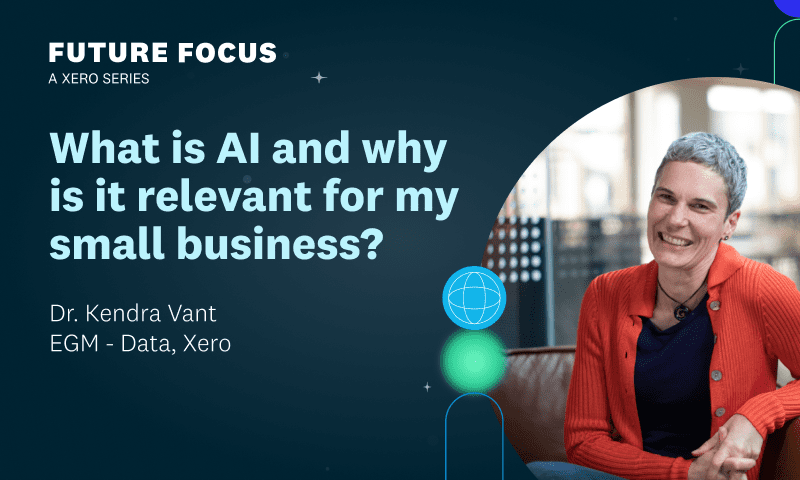It’s safe to say that artificial intelligence (AI) is now part of common language and everyday life. But while we’ve all heard of the term, not everyone really knows what it is or how to use it (or rather, whether it can be useful for them).
Believe it or not, the term ‘artificial intelligence’ has been with us since as far back as 1955, when a number of academics and professionals in the field of technology first proposed a study of the term. In that same year, the first AI program was developed, and in the many decades since, AI has held an evergreen fascination for the human race.
This fascination led us to explore and experiment our way into the first industrial robot, devise bold predictions about what AI will be capable of in our personal and professional lives, and even prompt a raft of popular culture references that captured our hopes, fears and imaginations surrounding the technology — from driverless cars through to robots with empathy, and even foolproof computers incapable of error.
While many predictions, hopes and fears surrounding AI have subsided or been disproven, we’ve gone on to make significant gains with AI in a huge variety of areas. For instance, the fun and time savings we all enjoy from products and services such as Netflix, Spotify and the various app stores we use every day. There’s a lot to be learned from the watching, browsing and purchasing habits of humans around the globe — and this is only possible thanks to AI.
As we’ve seen most recently with the advent of ChatGPT, the hype, fear and conjecture surrounding AI may never wane. But AI is here to stay. And for those not yet familiar with how to leverage its benefits, it can be the source of great angst — particularly when trying to figure out how to make use of it in your business.
Working with AI
Just because something is available to use, doesn’t necessarily mean you should use it. The best way to think about AI is as a tool — like a hammer. Just like a hammer, AI can be extremely helpful in the right situations, and less useful (maybe even dangerous!) in the wrong ones.
When used well, AI can create a magical ‘whole is greater than the sum of the parts’ experience, where humans and AI work in close partnership and accomplish things faster and with less effort.
Harnessing that partnership lets companies of many sizes deliver new and better experiences, remove manual toil, and provide helpful insights at a hyper-personalised level. Consider the many decisions made in your business each and every day. In many cases, AI can help make the process easier, faster and better informed.
For example, if you’re managing paper bills and invoices in Xero, AI is quietly at work for you every time you upload a new document — thanks to intelligent form filling and credit note detection.
Even as you’re busy reconciling your bank statements, AI is right there suggesting the best matches from your contacts and accounts.
These products look for patterns and trends in the data flowing through the Xero platform. And in even better news, every time you point out a mistake — by changing a suggested account or correcting the extracted receipt amount — you’re feeding back vital information to help the AI get better and better.
A great rule of thumb to follow when trying to work out if AI is right for your business is to consider a current business challenge you’re facing. If you can figure out the answer to the problem in a couple of seconds — and if five other humans would likely come to the same answer — then AI is likely going to do a reasonable job of answering that question or completing that task for you.
If the answer is more complicated or ambiguous, AI is probably not the right tool for that particular business challenge and humans will likely do a better job than AI — at least for the next few years.
Understanding AI and its value
Generally speaking, AI has proven to be fantastic at augmenting or extending human abilities and intelligence.
This is most notable in our interactions with AI-powered products and services. These products are brilliant at learning from the wisdom of crowds, and when millions of users complete billions of small tasks everyday, it’s possible to glean significant value in very little time.
But AI comes in more than just one type or form. In fact, there are two key types of AI that you should know how to distinguish from the other:
- General AI is just what it sounds like — a generally smart, reasoning entity that can tackle many varied tasks and learn from lived experience
- Narrow AI on the other hand is fantastically efficient at performing a particular task — so it’s never going to learn how to read the kids their bedtime stories!
Expert consensus says that General AI has a long way to go before it is ready to enter mainstream usage and deliver tangible value on a large scale.
Narrow AI, on the other hand, will become more and more useful to us. The only factor holding it back is us — specifically, the speed at which humans can define the problems for it to solve and build the data sets needed to train the algorithms. When used well, Narrow AI will continue to help remove toil from our everyday tasks.
A word on bad data
When used correctly and responsibly, AI is capable of contributing great value to our lives. When used incorrectly, there can be terrible consequences.
One of the contributors to negative AI outcomes is bad data. The good news is that there is a really simple way to avoid these negative consequences, and this is to keep accurate, up-to-date and consistently categorised accounts.
Data is the food for powerful AI. By feeding AI algorithms with great data, you’re less likely to run into trouble.




